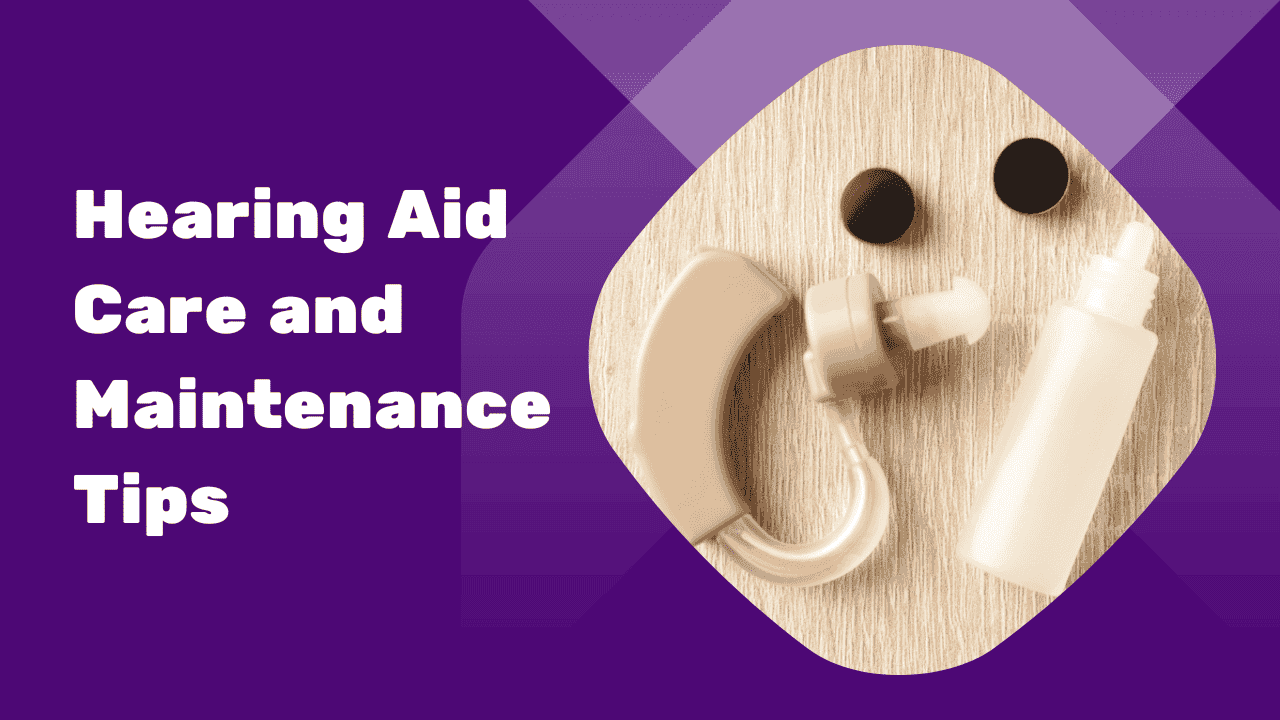Hearing aids are valuable devices that improve the quality of life for millions of people worldwide. They allow individuals with hearing loss to reconnect with the sounds they love and thereby communicate more effectively.
If you wear hearing aids, you already know how much they can enhance your everyday life, allowing you to engage fully in conversations and connect with the voices out there! To ensure that your hearing aids continue to perform optimally and with enhanced durability, it is essential to provide them with proper hearing aid care and maintenance tips.
In this blog, you’ll be provided with practical hearing aid care instructions on how to maintain or keep your hearing aids in top shape, thereby helping you maximize their lifespan while ensuring exceptional quality of sound. Let’s dive in!
1. Clean your hearing aids regularly
Regular cleaning is one of the most crucial aspects of hearing aid care. Daily maintenance helps prevent the buildup of dirt, wax, and debris, which can affect the performance of your devices. Follow these simple steps to keep your device clean and functioning optimally:
- Use a soft, dry cloth or a specialized cleaning tool to gently wipe the outer surface of your hearing aids. Be sure to remove any earwax or debris carefully.
- Clean the microphone ports using a small brush or a wax pick. Be gentle to avoid damaging the delicate components.
- If your hearing aids have removable ear molds or ear tips, detach them and clean them separately using mild soap and water. Rinse them thoroughly and let them dry completely before reattaching.
2. Handle your hearing aids with care
While hearing aids are designed for daily use, it’s also important to handle them with care to avoid accidental damage. Here are some tips for safely handling hearing aids:
- Always remove your hearing aids before showering, swimming, or engaging in activities that might expose them to excessive moisture.
- Avoid exposing your hearing aids to extreme temperatures or direct sunlight, as this might cause damage to the internal components.
- When handling your hearing aids, do so over a soft surface or a towel to prevent them from being dropped or damaged in case they slip from your hands.
3. Batteries: Powering Your Hearing Aid
Proper battery maintenance is crucial for reliable performance. Follow these guidelines to ensure an optimal battery usage:
- Keep spare batteries on hand so that you’re never left without power. Store them in a cool, dry place, away from direct sunlight.
- Before inserting a new battery, ensure your hands are clean and dry in order to prevent contamination.
- Consider investing in rechargeable hearing aids or rechargeable battery options. They are environmentally friendly and can be cost-effective in the long run.
4. Keep Your Ears Clean
Maintaining good ear hygiene is essential for overall ear health and the proper functioning of your hearing aids. Clean your ears regularly and keep them free of excessive earwax.
If you experience a wax buildup, consult with an audiologist for safe removal techniques. Excess earwax can block sound from reaching the microphone and affect the performance of your hearing aids.
5. Regular Professional Check-ups
Schedule regular appointments with your hearing healthcare professionals to ensure that your hearing aids are functioning optimally.
They can clean and inspect your devices thoroughly, perform any necessary adjustments, and address any concerns you may have.
Remember, regular hearing aid care and maintenance are essential for preserving your hearing aid’s longevity and ensuring the best possible listening experience.
Take a moment to reflect on the incredible impact your hearing aids have on your life. They empower you to connect, communicate, and engage fully with the world around you.
By following these hearing aid care and maintenance tips, you can extend the lifespan of your devices while enjoying exceptional sound quality and performance.
You can ensure that your devices provide you with the best possible hearing experiences for years to come.
Regular cleaning, protection from moisture, gentle handling, and maintaining good ear hygiene are key to keeping your hearing aids in top shape.
Remember, proper care is essential for maximizing the longevity of your hearing aids, so make it a part of your daily routine.
If you have any questions or concerns, reach out to your hearing healthcare professional for guidance, and take pride in your hearing aids and make caring for them a daily habit.
By doing so, you are investing in your own well-being and ensuring that you can continue to enjoy the sounds of life with clarity and confidence.





